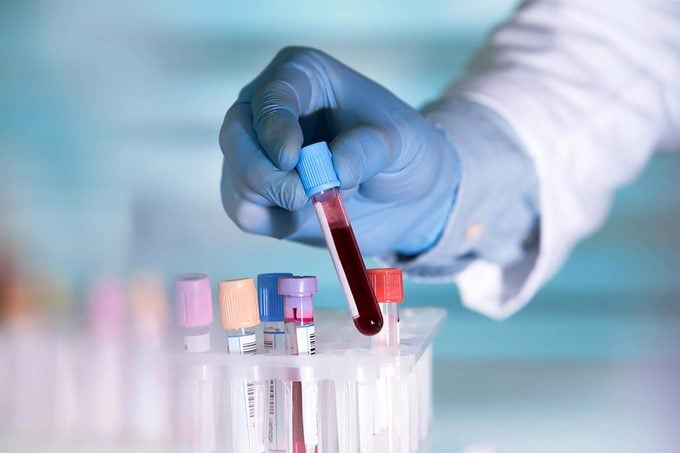10 Reasons to Donate Blood: What Doctors Need You to Know
Updated: Oct. 10, 2022

Doctors will tell you that donating blood is vital: That pint you give can save three lives. And that's just one of the good reasons to give.
Four-and-a-half million Americans need a blood transfusion annually, and that requires you (and me, and your neighbor, and your sister, and your dad) to donate blood, if you can. (Read on to see the groups of people who should not donate blood.) The process can make some people nervous, but blood donation is safe, available to most healthy adults, takes just about an hour, and you can return to work after. If you’re still uncertain, here are 10 more good reasons to make an appointment today:
There’s a great need for blood

This is a stat you’ll want to remember: every two seconds someone needs a blood transfusion in the United States, says Paul Sullivan, senior vice president for the American Red Cross. He also goes on to note that U.S. doctors and emergency personnel go through nearly 7,000 units of platelets and 10,000 units of plasma daily. That means more than 10,000 people need to donate daily, explains Sullivan.
Every donation makes a difference
Each blood donation you make can save up to three lives, notes the American Red Cross. Before heading out to a blood bank, here are 13 things you should know about donating blood.
It’s the best gift you can give
Sullivan says he looks forward to the opportunity to give blood. “It feels very personal, and it’s a direct way to give to someone else. I feel good that I’m giving blood that will help sustain someone else when they need it,” he says.
There’s a need for regular donors
You can give blood every 56 days. “We encourage people to think about donating blood as a habit or something they start to self-identify with,” says Sullivan. As a regular blood donor, you can give up to six times per year (seven if you time it right). But even committing to two or three times per year will help meet the medical needs, he says.
All blood types are needed
You may have heard that there are some blood types that are more in demand than others. Type O blood is one of those. It’s the most common type and O-negative is used for emergency transfusions in hospitals, according to the American Red Cross. However, if you have one of the other blood types (like the rarest blood type in the world), a blood bank is still thrilled to see you walk through their doors. “If you come in, we have an important need for every donor’s blood,” says Sullivan. Learn what your blood type says about you.
You can be one of the few who donates
Experts estimate that of the 38 percent of Americans eligible to donate blood, only 10 percent do so in a given year. While medical centers need donations year-round, it’s especially important during the holidays when busy schedules and inclement weather get in the way. “We do work hard to get the word out, but we find ourselves short this time of year. The holidays are a very important time to take an hour out of your day, give to someone else, and make an impact on their life,” says Sullivan.
You may be eligible (even if you think you’re not)
There are a few restrictions for donating blood: You need to be at least 17 years old, weigh at least 110 pounds, and be in generally good health. “Many people self-exclude and they don’t need to,” says Sullivan. For instance, there’s no upper age limit to donating. There are other restrictions, like if you’re pregnant, you recently had certain types of cancers, you have a history of travel to certain places outside the U.S., or you are a man who has sex with men. (Some of these restrictions are temporary.) Here is a list of eligibility criteria for blood donation. Also, check out the list of reasons why you might not be able to donate.
You’ll feel good (mentally and physically)
If your body feels normal (or returns to that feeling) shortly after donating, you’re more likely to keep doing it. Prep yourself by hydrating with water before you go, and eat a healthy meal. After you’ve finished donating, don’t rush off; instead, stick around for 15 minutes or so, sip on some juice and nibble on snacks (they’re often provided), rest, and reflect on your good deed, says Sullivan.
You can get it done quickly
Depending on where you live, there may be many blood banks or donor centers in your area. (Here’s a list of places where you can donate blood.) If you choose to donate with the American Red Cross at one of their blood drives, you can download the Red Cross Blood Donor App and use RapidPass to complete the donation questionnaire, allowing you to zip through the line faster and save an extra few minutes.
You can track your donation
While it’s nice to know that donating blood saves lives, it’s even better to see it. If you’re donating through the American Red Cross, you can look on their app and track as your blood donation travels to a Red Cross Blood Bank, gets delivered to a local hospital, and then when it’s been transfused to someone. That will really make you feel good.



















